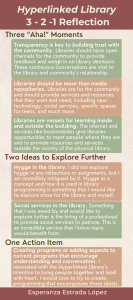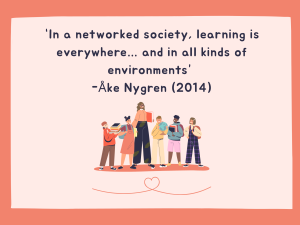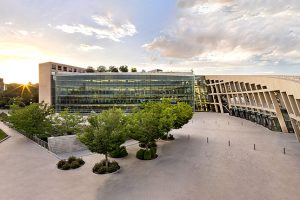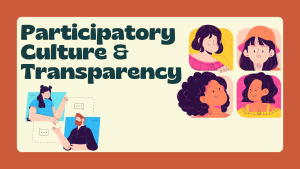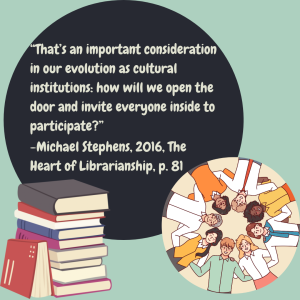I was immediately engaged with Danah Boyd’s “What World Are We Building?” article and how the Internet is both a platform for great social change but also a way “to manipulate people for capitalist gain”. It is interesting to see how much of that is still true today but expanded to a wider (worldwide) community. It’s disheartening to know that inequity, prejudice, and racism are still engrained into social media and search engines, just as Boyd pointed out almost ten years ago. And now it has also expanded through generative AI, something that feels has taken over much of our online and offline lives (MIT Sloan Teaching & Learning Technologies). Part of Boyd’s last statement in the article says, “We need those who are thinking about social justice to understand technology”. The great thing about today is (though we still have a lot of issues) that people are understanding and using technology to work towards social justice. It reminded me, in particular, of an activist that has used technology (through social media) to make positive change:
I remember first following noname (@nonamehiding on Instagram) in 2021 and discovering that she collects and sends free, radical and revolutionary books to different prisons for their book club. What started as an online book club in 2019 has transformed into having “20 book club chapters across the United States and 4 international chapters” and sending books to “1500 incarcerated members of the club” (Noname Book Club, n.d.). All for free! Her online activism is loud and making such an amazing difference. This is what I imagine when I think of a hyperlinked community: how an online book club can expand in such a way to reach over a thousand incarcerated people and many more people in book clubs across different cities. Incarcerated people are part of our community too and should be included when we think about community. noname is doing that and reminding us of why it is important. I also want to point out that they have a physical library now too: Radical Hood Library in Los Angeles, California with different events for their community!
Radical Hood Library’s June 2025 Calendar.

So, when initially reading “What World Are We Building?” , it felt like a dismal reminder that a lot needs to change. While that is still true today, I am happy that there has been a lot of change in the past nine years since she wrote the article. So much so, that I was immediately able to come up with an example of how social activists are using technology for the furtherance of social justice. I think that is something that we have to remember: hyperlinked communities are great catalysts for change and a way to lead with humanism. noname is someone that I feel leads with understanding and that is something that we, as information professionals, also need to do. As Loida Garcia-Febo (2018) so aptly stated, “Service steeped in humanism, compassion, and understanding should be the cornerstone of what we do, and why we do it, for all members of our communities, including the underserved”.
References
Boyd, D. (2016, January 25). What world are we building? Medium. https://medium.com/datasociety-points/what-world-are-we-building-9978495dd9ad
Garcia-Febo, L. (2018, November 1). Serving with love: Embedding equality, diversity, and inclusion in all that we do. American Libraries. https://americanlibrariesmagazine.org/2018/11/01/serving-with-love/
MIT Sloan Teaching & Learning Technologies. (n.d.). When AI gets it wrong: Addressing AI hallucinations and bias. https://mitsloanedtech.mit.edu/ai/basics/addressing-ai-hallucinations-and-bias/
nonane [@nonamehiding]. (2025, June 3). June Calendar 💜 [Image]. Instagram. https://www.instagram.com/p/DKcboXgIaam/?utm_source=ig_web_copy_link&igsh=MzRlODBiNWFlZA==
Noname Book Club. (n.d.). Welcome to Noname Book Club. https://nonamebooks.com/
